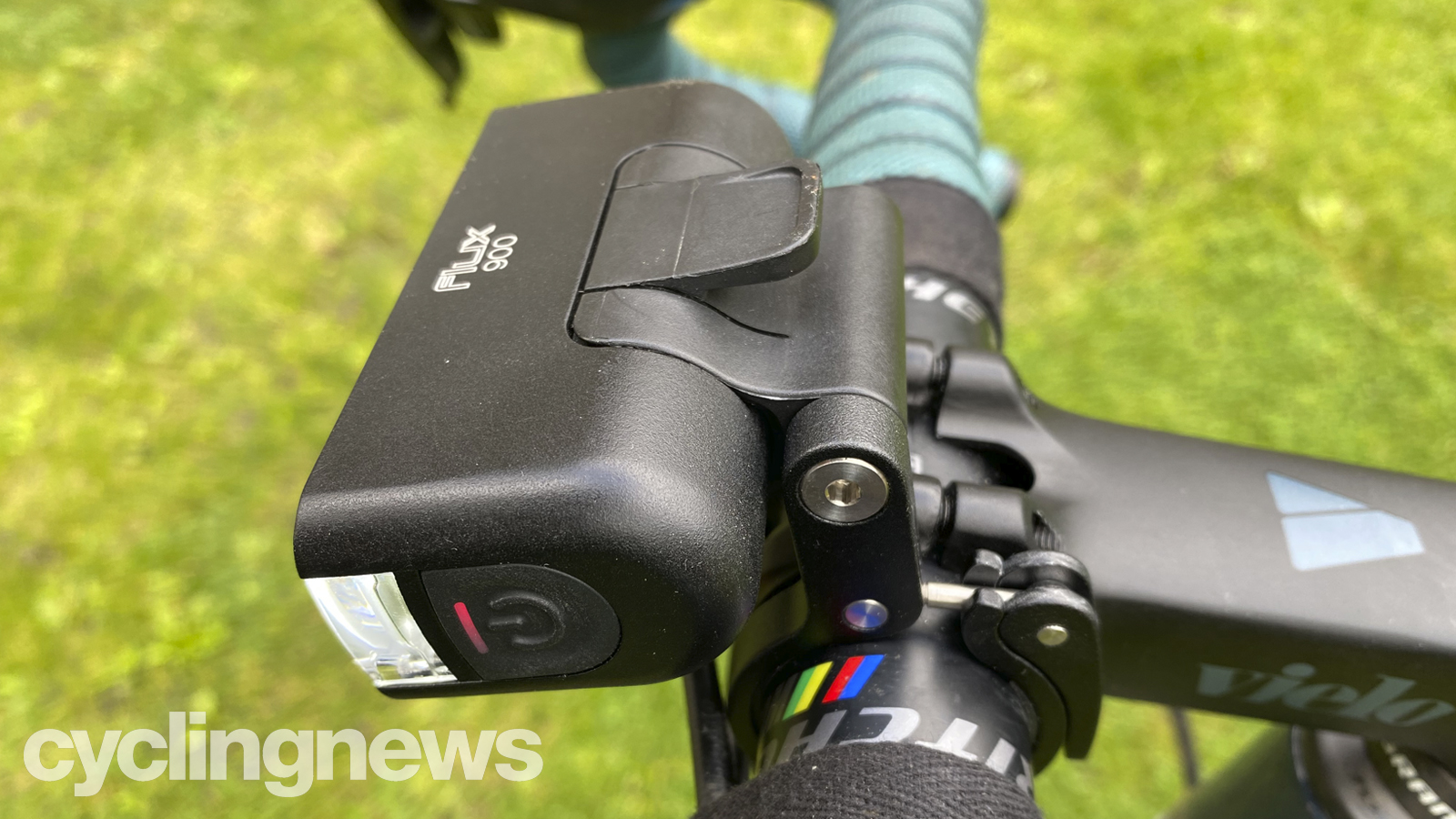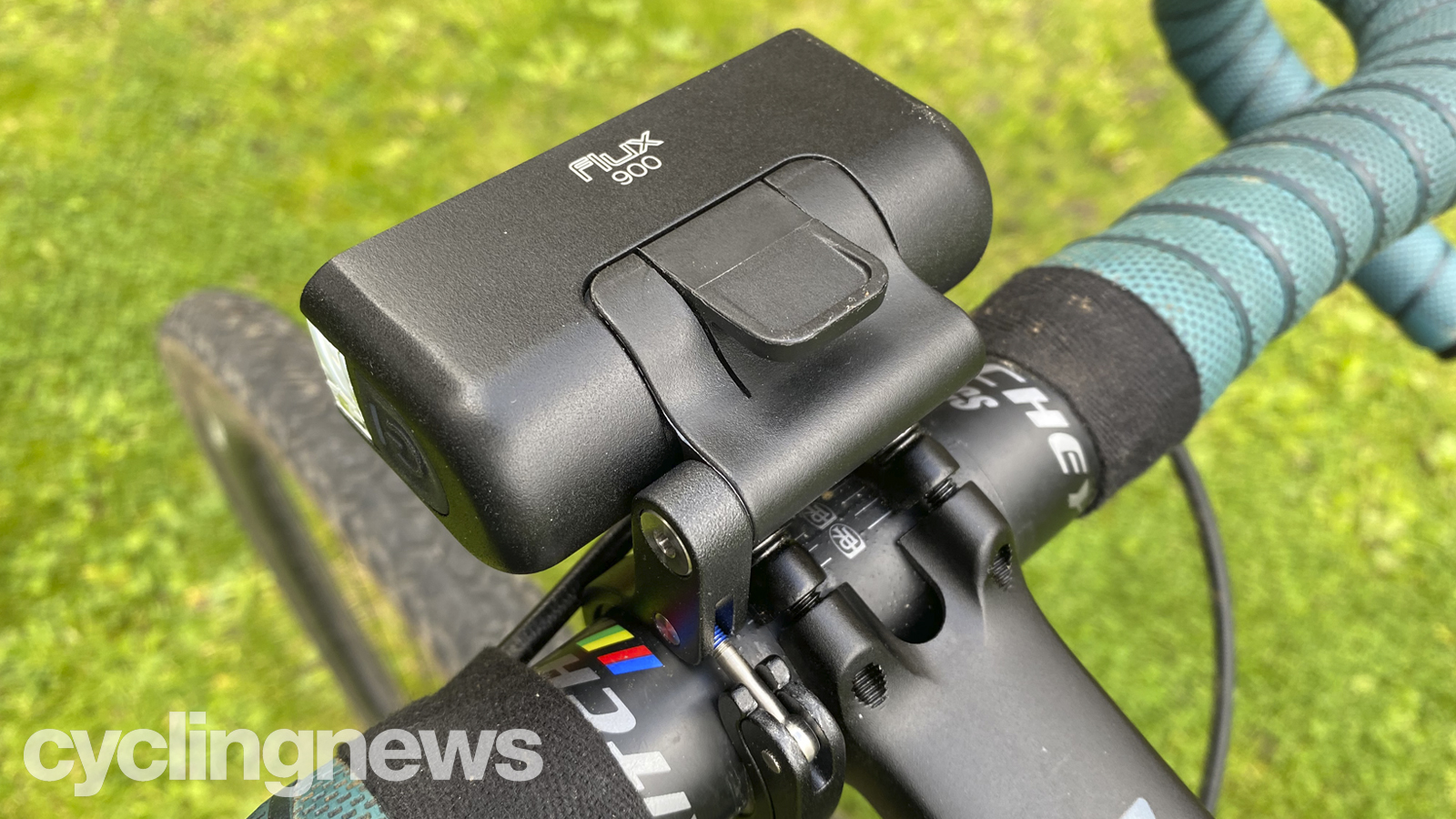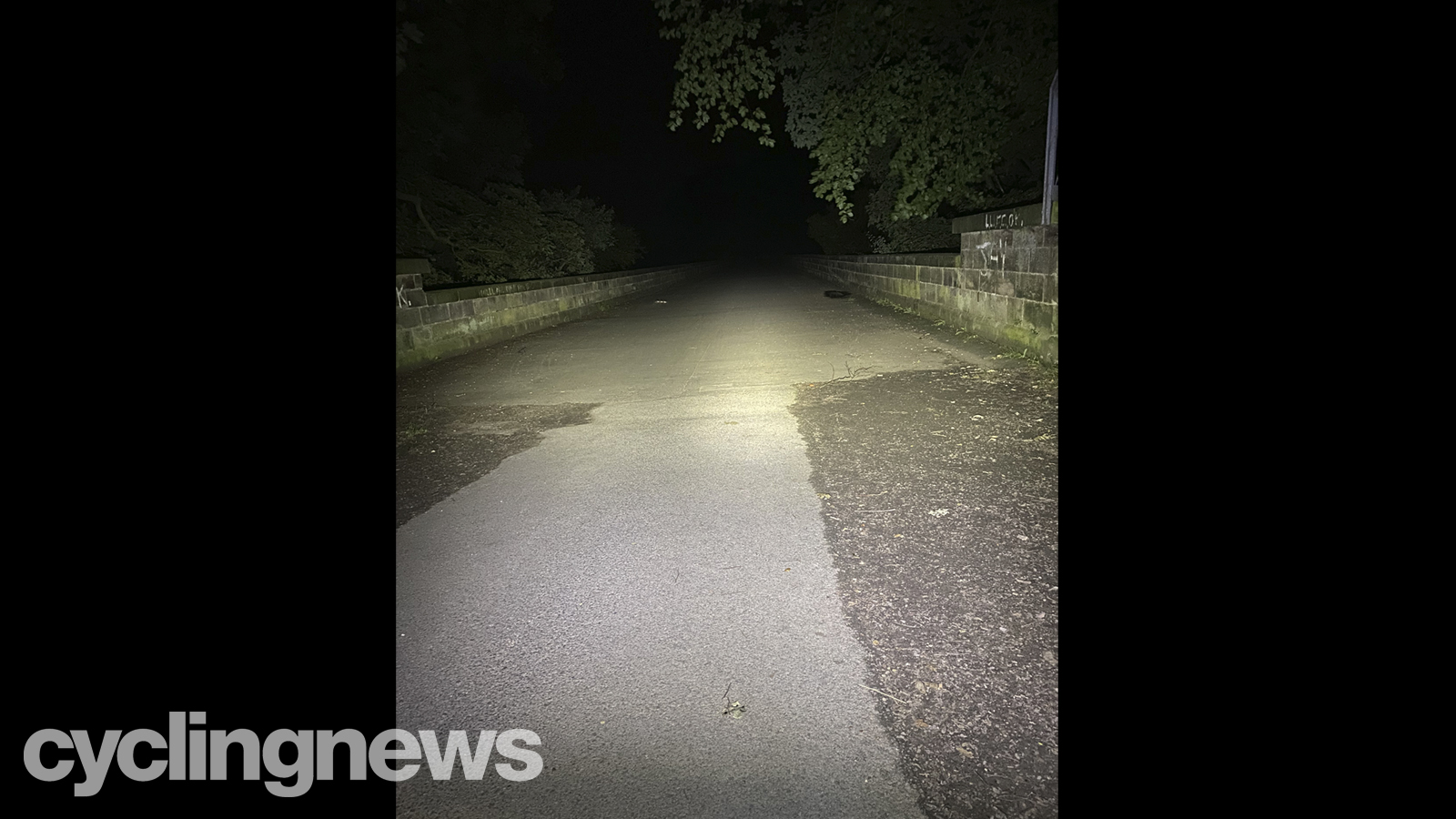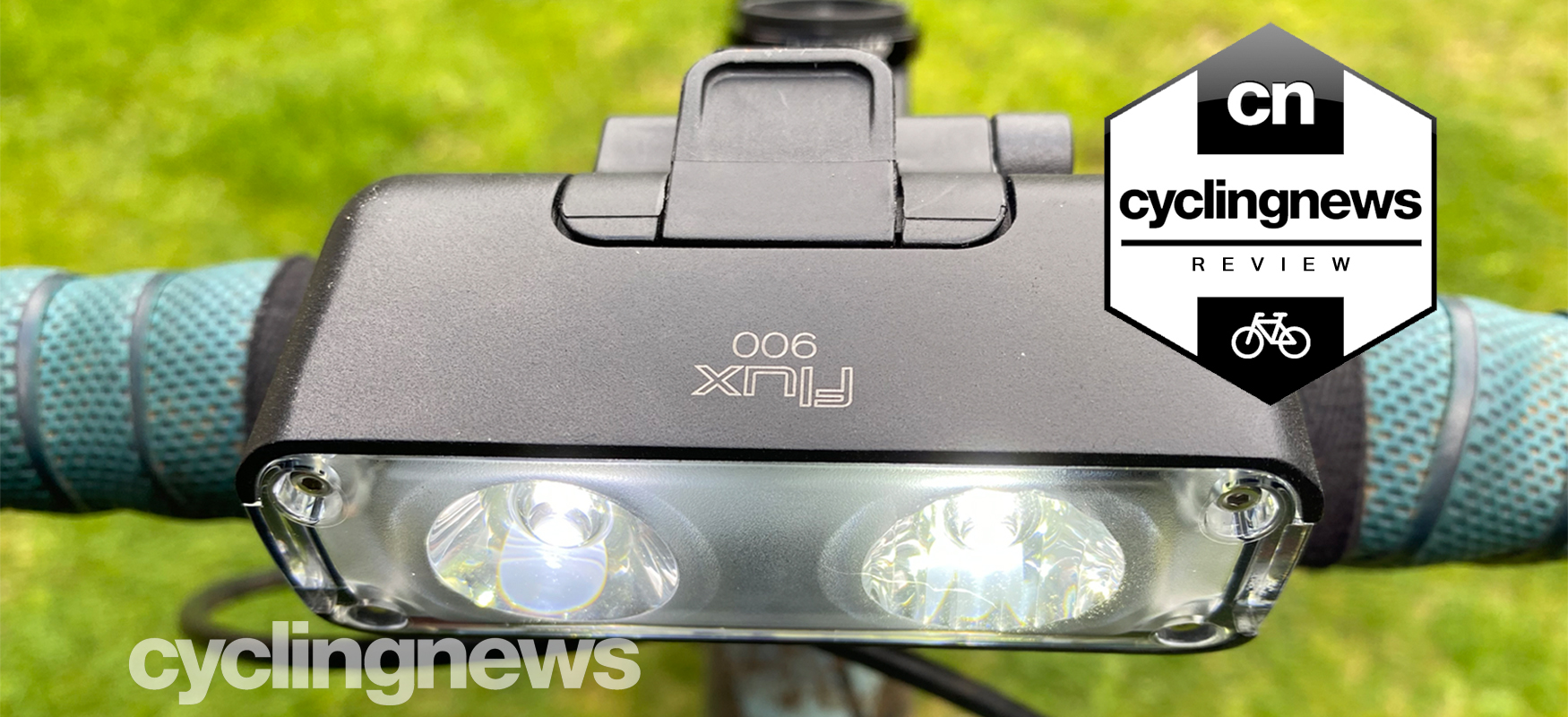Cyclingnews Verdict
Distinctive binary beam but limited on low power usefulness and control/battery indication features for the money.
Pros
- +
Super wide beam
- +
Centre of the beam packs an extra punch for picking out details
- +
Fast recharge
- +
Adjustable round bar mount
- +
Quick-release head
Cons
- -
Limp supplementary modes
- -
The binary beam can confuse
- -
Not much reach
- -
Limited battery info
- -
Expensive for power and features
You can trust Cyclingnews
The Specialized Flux LED lights have been a feature in the brand's range for nearing half a decade. Plagued by various warranty issues, the original option was far from Specialized's best work, but the wide beam pattern and below-handlebar, centrally-positioned mounting point were positives that struck a chord for many.
The Flux was eventually given an overhaul, and Specialized doubled down on the positives, while addressing the negatives, but is the latest Specialized Flux front light a shining success?
In true Specialized fashion, the brand has taken an innovative approach with the latest Flux lights, which come in the 900-lumen head-light version - as tested - as well as a helmet-mounted 800-lumen version. The wide spacing of the flood and spot lensed LEDs has plus and minus points though, so is it worth the £110.00 ($119.99 / AU$180.00 / €140.00) price tag? And how does it compare to the best bike lights from the competition?
Design and specifications
Both of the available Flux lights use the same broad box head unit with a Cree XPG2 LED on one side and an XPL on the other. These sit behind a focusing spot lens and a ribbed diffuser lens set into the wide, rectangular clear faceplate. This faceplate also cuts back into either side of the casing for reasonable sideways visibility in busy traffic, day or night.

There are D-shaped rubber sections behind the cutouts on each side, which hide the USB recharging port and the on/off/mode switch respectively. The mode button toggles the output through four brightness options: the first includes both LEDs together at full power (900 Lumens claimed); the next two modes are either the flood or spot LED bulbs individually lit at 66 per cent power (300 Lumens claimed); and the fourth setting is a ‘daytime flash mode’ that flashes each LED alternately for a combination (400 Lumens claimed) of attention-grabbing power. There’s no way to change the relatively simple menu, and there’s no remote switch option, but at least the button itself is easy to find and press.

The aluminium round-bar cam mount gets a short extension to keep it away from bars and cables, and it's offset so you can sit the mount centrally in line with the stem. The attachment bolt at the end of the neck can be loosened to let you swivel the head unit through 45 degrees, so it can be mounted over, in front of, or underneath the stem. While the cam mount is quick to attach or remove, the mount includes a broad clip that can be peeled open to remove the light immediately for charging, while leaving the mount - and thus its position - on the bike. Besides the helmet mount that the Flux 800 uses, Specialized also offers GoPro-style and 35mm round bar mounts as aftermarket extras at refreshingly reasonable prices.
Performance
Once set up, the beam created by both LEDs is certainly different, with a very wide spread of light up close and down the flanks of your vision until it fades at mid-distance. While a left side offset is clear if you project the light onto a blank surface, there’s still enough spread on the right side to mean it’s a non-issue when you’re actually riding.

The spot lens then creates a pronounced shaft of light slightly right of centre for a strip of brightly enriched detail. However it doesn’t add much in terms of reach beyond the broad beam or early warning of upcoming issues at speed. While the large differential between the wide and spot beams isn’t an issue on broad, straight roads with a simple surface, it can create confusion when you’re already trying to decipher moving shadows and changing surfaces on winding, rougher roads. While they significantly extend run times, the solo LED options don’t have enough power to make much of the specific lenses unless you’re crawling slowly up a climb.
Specialized’s quoted run times are slightly generous but an hour and a half run time before noticeable fading isn't too bad, considering the relatively compact size. The battery indicator is a small LED that transitions through green, amber, red and flashing depending on how much battery is left. It's positioned on the side of the power button rather than under your nose so you’ll need to make a conscious effort to check it. It only changes colour at 50, 20 and five per cent remaining, so there’s no way to gauge how fast you’ve burnt through the first half of your run time if it’s cold or you’ve been toggling through different modes. On the plus side, the battery charges really quickly with a full top-up possible in around three hours with a high power USB outlet.
Verdict
Specialized has deliberately made the Flux different in search of the ‘perfect beam’ but it only delivers on that promise if you want a really broad wash on either side of your wheel with a focused spear of light down the centre. We found that distracting in more complicated nocturnal situations though, and the supplementary single LED settings are too low powered to be much use for seeing with.
The lack of remote control switches or custom menu tuning and limited battery life indication counts against the Flux too, so while it’s OK, it wouldn’t be one of our first picks for over £100.
Tech Specs
- Price: £110.00 / $119.99 / AU$180.00 / €140.00
- Run time: 1 hour 35 mins
- Power: 900 Lumens
- Battery: 2600mAh
Ready to hit the road with top-tier equipment? Check out our Specialized discounts for great deals on bikes and accessories.
